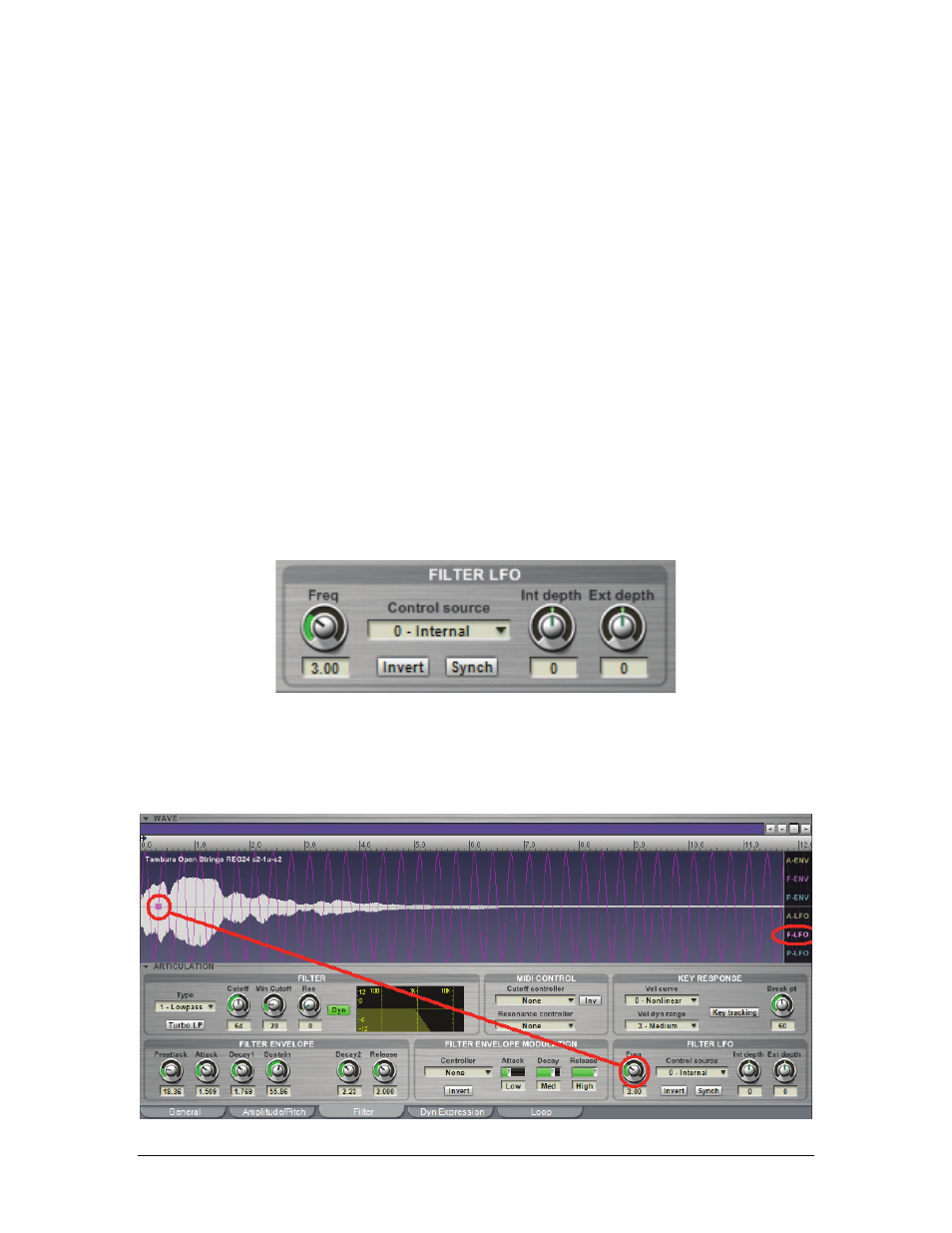Teac GigaStudio 4 User Manual
Page 103

GigaStudio 4 Reference Manual
103
Filter Attack, Decay, and Release Modulation Amounts
The Attack, Decay, and Release parameters have four different modulation levels. Each parameter is
independent of the others.
Off :
The parameter ignores the MIDI Controller.
Low:
Very light response to the MIDI Controller. Example: With Invert off and Attack being modulated, high
velocity notes will extend the attack time a little bit.
Med:
Moderate response to the MIDI Controller. In the example above, high velocity notes will extend the
attack time by considerably more.
High:
Provides the maximum parameter variation based on the MIDI Controller value. Example: With Invert
off and Release being modulated, higher velocities will give much longer release times. With Invert on, higher
velocities will give much shorter release times.
Note that the effect of modulation depends on the envelope settings. Example: If the envelope Attack time is
zero, the Mod controller won’t affect it, as you can’t make zero longer or shorter. Once you enter a parameter
higher than zero, this controller will then have an effect. Shorter Attack time settings result in very light
changes with the Mod controller, while longer settings result in more drastic changes with the Mod
controller. The Decay and Release settings work similarly.
Filter LFO Section
The Filter LFO provides periodic variations in the filter cutoff frequency.
Frequency (0.1 to 10Hz)
This sets the LFO frequency. The Filter LFO frequency is superimposed on the waveform when F-LFO is
selected with the Envelope/LFO buttons toward the right of the waveform display. Also note that a node is
located toward the left side of the waveform. You can adjust frequency by dragging this node.